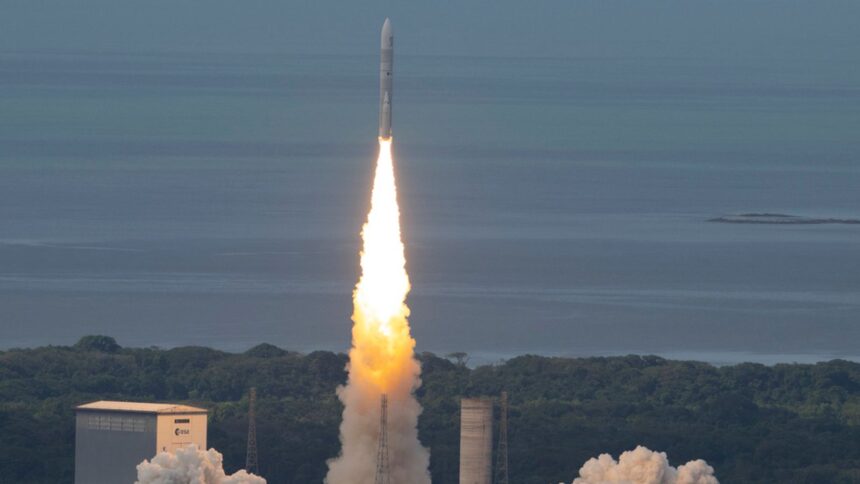The European Space Agency (ESA) will be able to launch satellites on its own once more if the entire launch is successful.
Ariane 6 launched from Europe’s Spaceport in French Guiana shortly after 8 p.m. BST, with a four-hour window between 7 and 11 p.m.
It will take somewhat less than three hours for its first flight.
Josef Aschbacher, the director general of ESA, posted on X shortly before 9 p.m. BST, confirming that the rocket was in circular orbit.
Soon after, he shared a video of the festivities from the headquarters along with the message, “We have made history for Europe.”
This is really a lovely moment, and everything is nominal and going so well,” he remarked.
When it is put into service, Ariane 6 will be the space agency’s newest low-orbit taxi, capable of removing equipment and satellites from the atmosphere.
It is the most current of a lengthy series of Ariane satellite launchers, which include Ariane 5, which launched the Jupiter Icy Moons Explorer and the James Webb Space Telescope into space.
The European Space Agency now needs to rely on the commercial sector to launch its satellites after Ariane 5 was retired last year.







